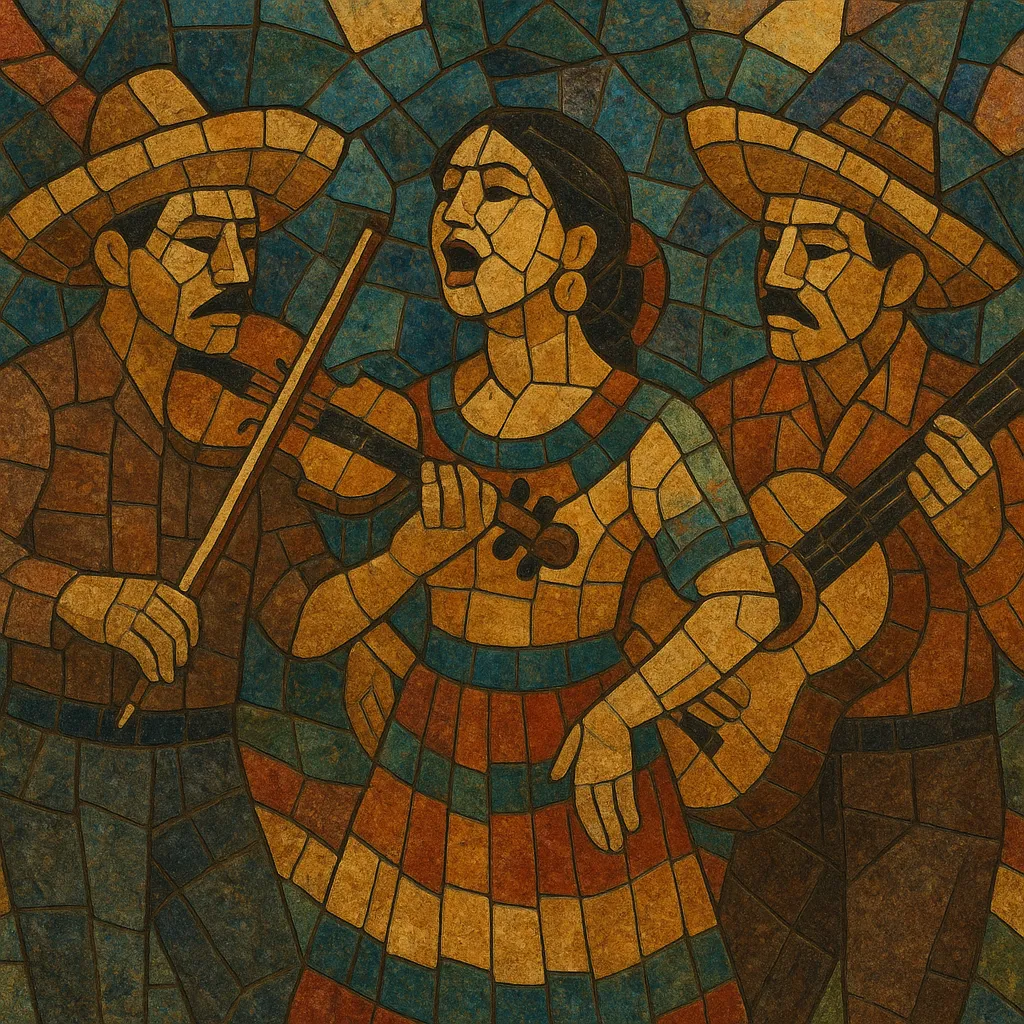Huapango is a Mexican folk genre and dance whose heartbeat is the sesquialtera: a lively alternation and superposition of 6/8 and 3/4 meters that fuels foot-stomping zapateado on a wooden tarima. It is especially associated with the Huasteca region (Hidalgo, San Luis Potosí, Veracruz, Tamaulipas, Querétaro, and Puebla) and features small string ensembles.
The classic Huasteco lineup is a virtuosic lead violin, jarana huasteca (a small, high-pitched rhythm guitar), and the deeper-voiced guitarra quinta huapanguera. Singing frequently employs ornamental falsetto, improvised verses, and playful call-and-response. Beyond the Huasteca, there are related variants—huapango arribeño in the Sierra Gorda, mariachi-styled huapangos, and norteño huapangos—that adapt the core rhythmic feel to different regional ensembles and repertoires.
Huapango crystallized during the colonial period as Spanish dance-song idioms—especially the fandango—interacted with Indigenous musical practices in eastern and central Mexico. Spanish triple-meter dances like the jota and seguidilla, filtered through Baroque-era performance habits, mixed with local instruments, languages, and communal dance traditions. From this blend emerged the signature sesquialtera feel (the interplay of 6/8 and 3/4) and the social event known as the fandango, where music, dance, and improvised poetry converged.
By the 1800s the Huasteca region had consolidated a distinctive trio format: lead violin, jarana huasteca, and the bassy guitarra quinta huapanguera. Singers developed a hallmark falsetto style and extemporaneous verses, while dancers codified zapateado patterns on a tarima. Parallel regional strains such as huapango arribeño (Sierra Gorda) evolved their own poetic duels and instrumental textures.
In the early-to-mid 20th century, huapango rhythms and repertoire flowed into urban and popular circuits. Mariachi ensembles adopted huapangos for stage and film, helping carry the style across Mexico and abroad. A landmark of concert nationalism, José Pablo Moncayo’s symphonic "Huapango" (1941), orchestrated themes collected from Veracruz, showcased the genre’s vitality in the symphonic hall while preserving its rhythmic essence.
Today huapango thrives in community fandangos, folkloric stages, and modern recordings. Huasteco trios preserve the traditional sound; mariachis and norteño groups render huapangos with trumpets, violins, accordions, and bajo sexto; and new generations keep improvisational verse and dance central. Festivals and regional cultural programs continue to renew the tradition while maintaining the sesquialtera pulse that defines the genre.


